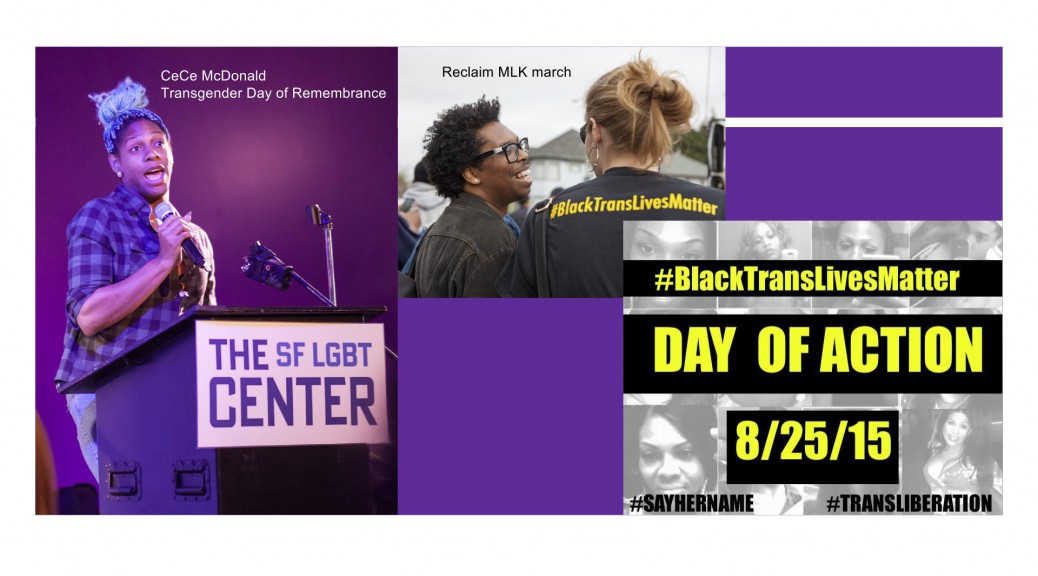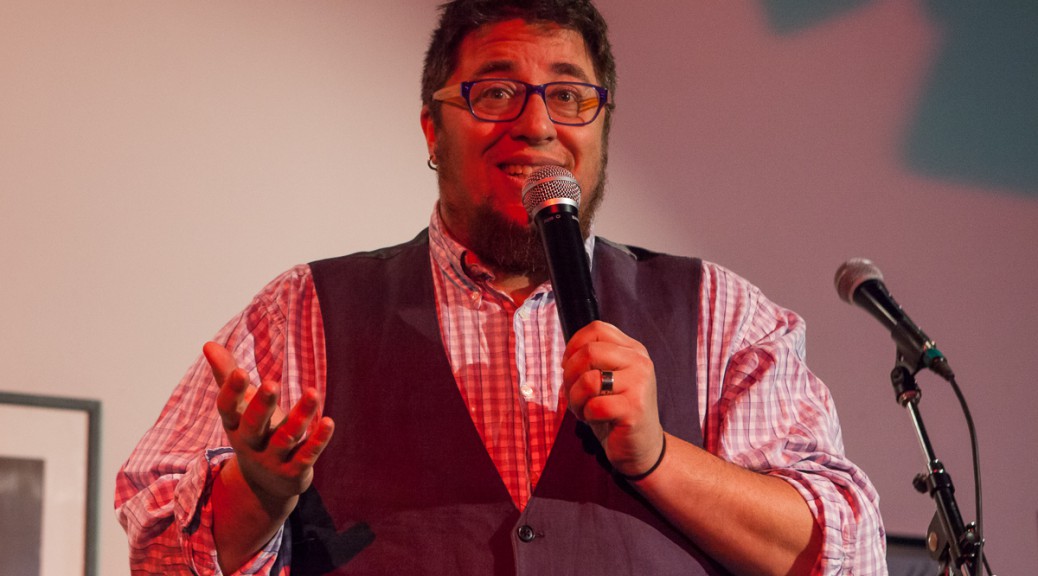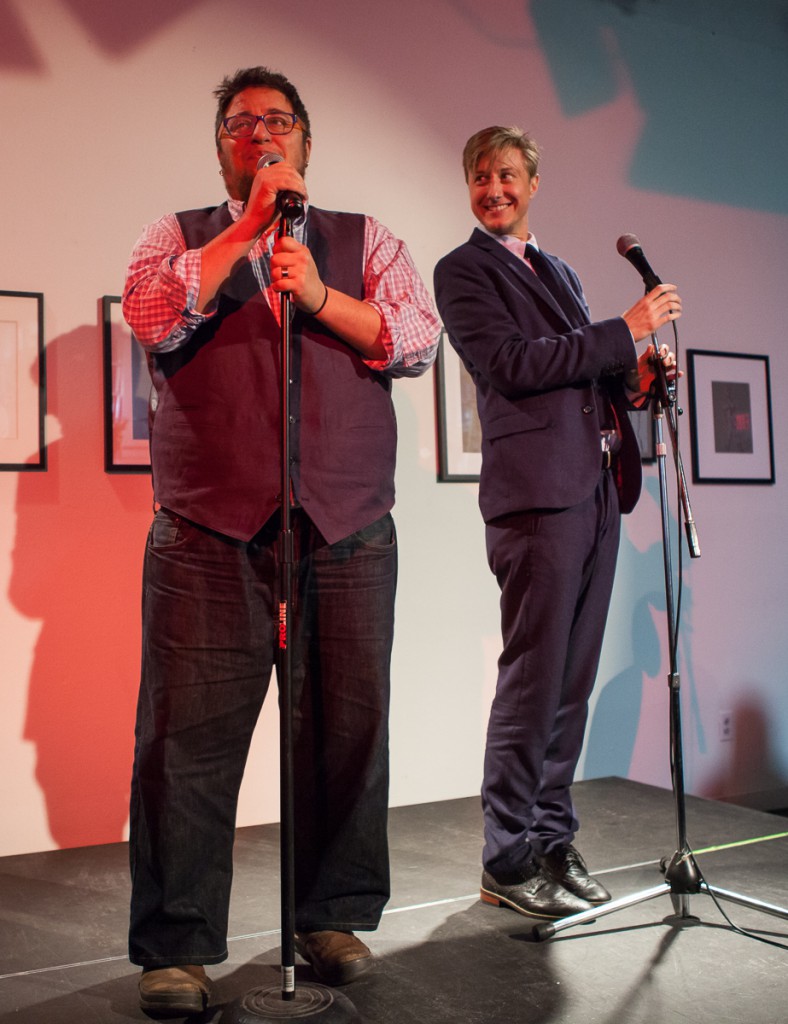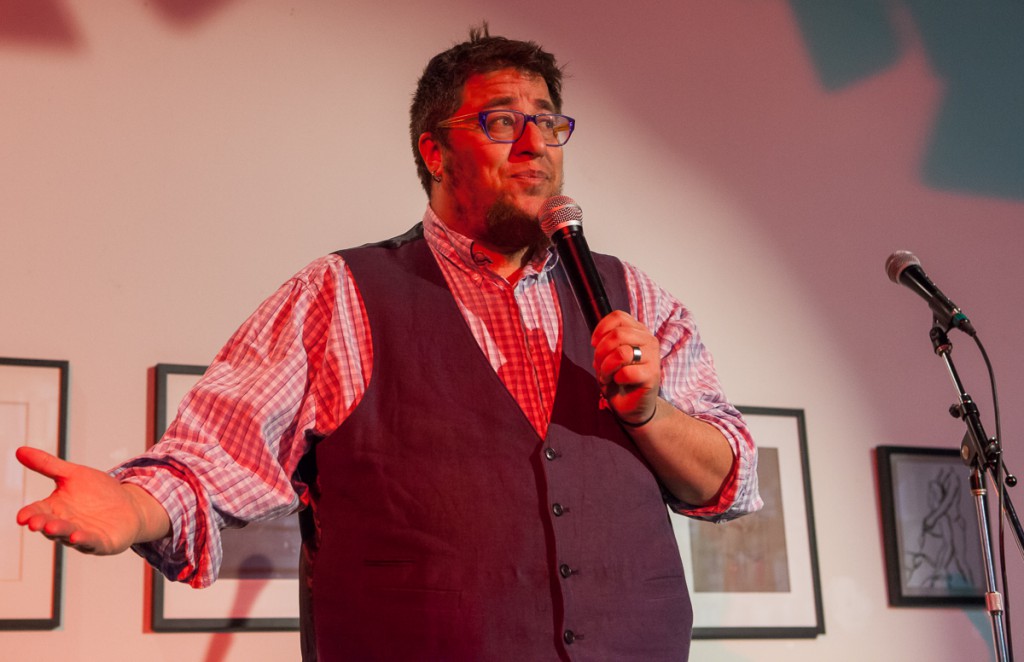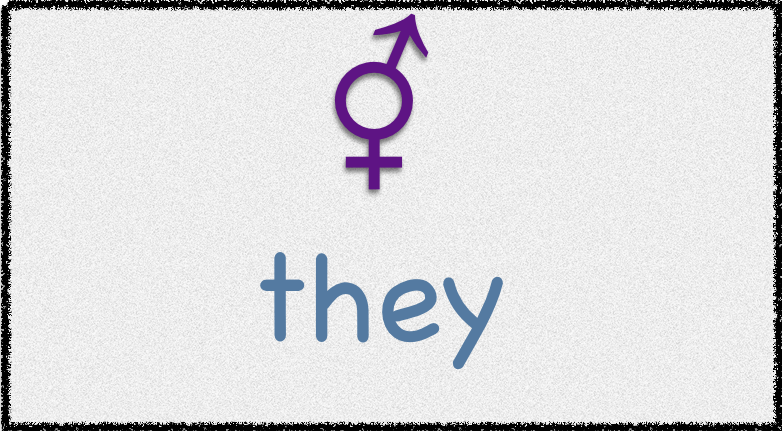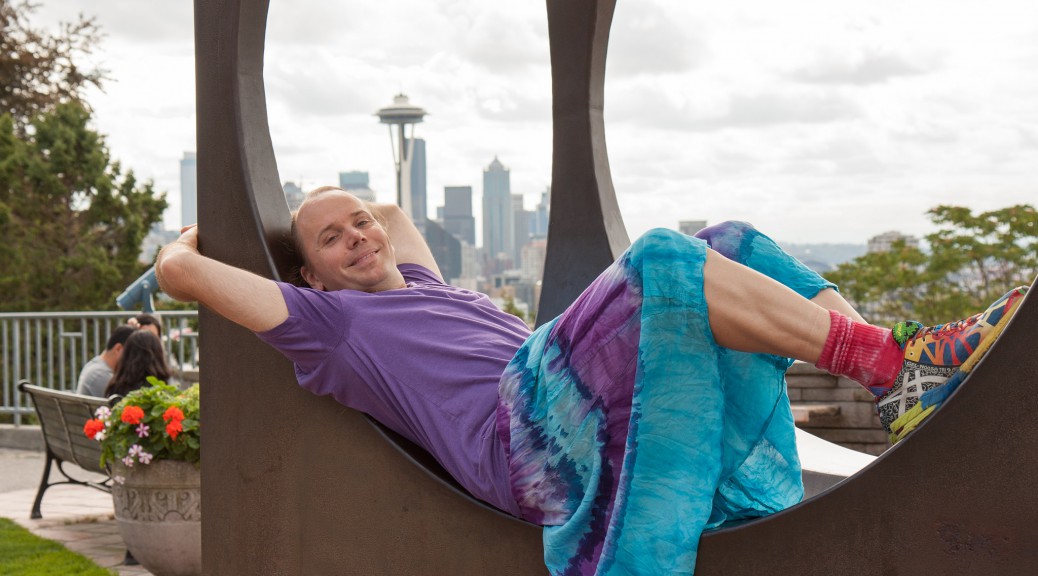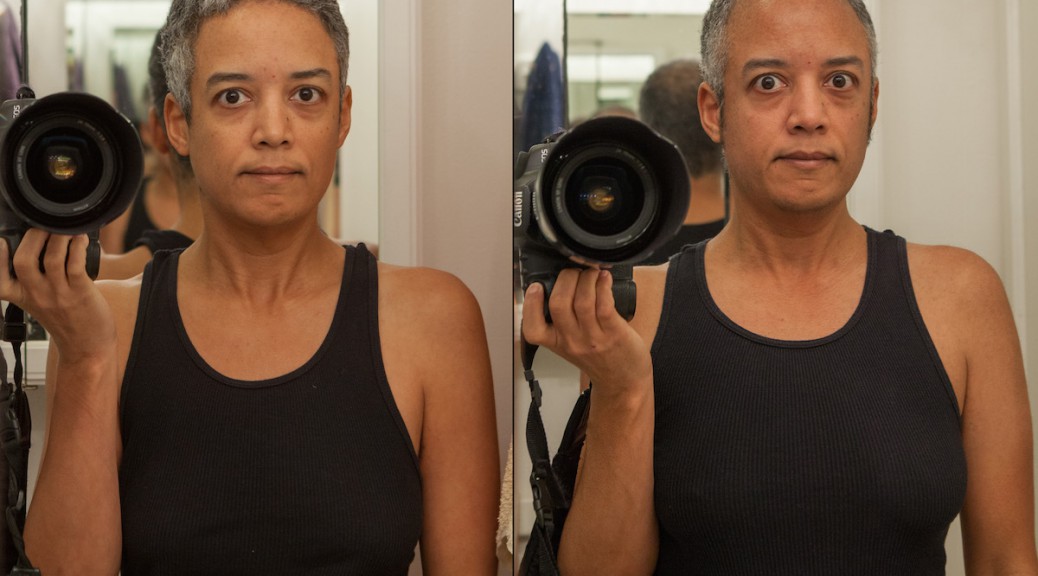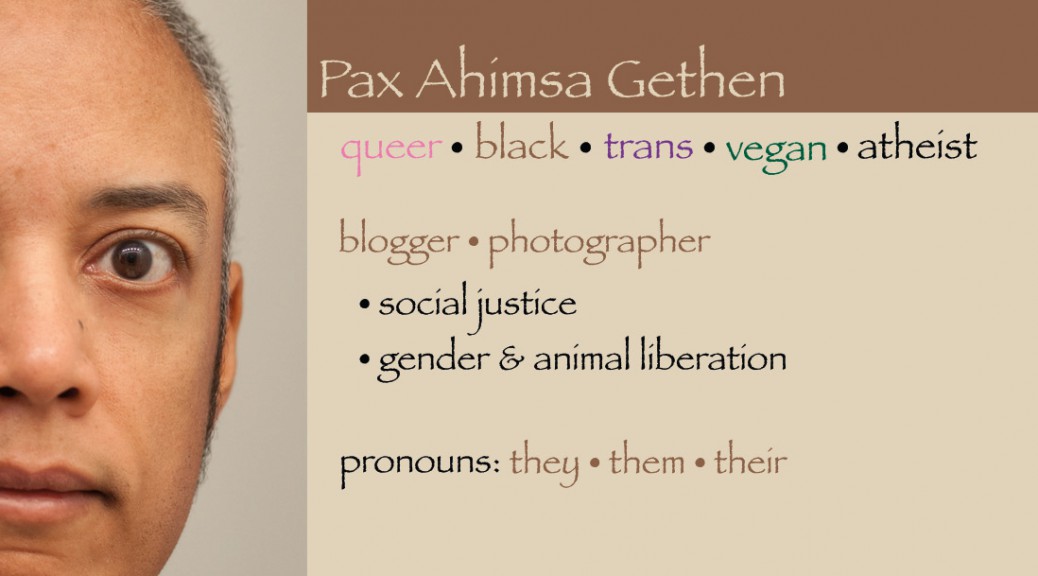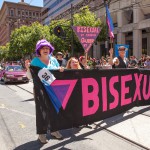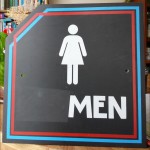Content note: Discussion of fitness and health issues. (Which, for the record, have nothing to do with veganism.)
Due to depression and dysphoria, I’ve spent increasingly less time in public over the last few months, canceling all of my regular commitments (volunteer work, voice lessons, etc.), and even putting off needed medical appointments like dental and vision exams. Sitting in front of the computer and TV most of the day, and often eating whatever junk food Ziggy brings home because I’m too tired to cook, have gradually expanded my waistline without me noticing, since I’ve been spending most of my time in my underwear or sweat pants.
This is not the first time I’ve gained a noticeable amount of weight. In my adult life my weight has varied over a 60 pound range. Because of this variation, I would always keep pants in several different sizes around. But when I transitioned I was near the lowest end of that range, so I have no larger pants to return into. (I gave away nearly all of my “women’s” pants and won’t return to them, as I much prefer men’s styles.)
Shopping for clothes is something I hated even before transitioning, and I hate it even more now. I could order new pants online and hope they fit, but I’d rather reduce my waist size. I did buy one larger pair of jeans at Out of the Closet recently, but for the umpteenth time was misgendered when they were rung up as “WMNS BTMS” (see previous link), so I really don’t want to go there again.
Reducing to a slimmer size for me isn’t about meeting standard recommendations for how much someone of my height, age, and sex (which is not a simple question due to my trans status) should weigh. In fact, I’ve decided the number on the scale is basically irrelevant; what I’m most interested in is the amount of fat around my waist, chest, and hips. Some say that body fat is irrelevant also, and I do agree that there are many other factors that contribute to health and disease. I had blood tests done recently, so I have a good general idea of my overall health and risk factors.
When it comes down to it, I just feel better when I have less fat on my body. I feel more energetic, more positive, and happier that I have one less thing to stress out about. Eating a healthy diet – which, for me, means high in starch and low in fat – and getting regular exercise are important parts of my self-care that I’ve been neglecting, and minimizing the amount of fat on my body is – for me – a reliable consequence of those actions.
But even independent of any health concerns, I cannot see fat on my body as irrelevant. Not as long as curves are associated with being female. I would love to live in a world where body shape and parts were not correlated with gender, but we are nowhere near that utopia right now. And while I can lobby for more diverse representation of trans men and non-binary transmasculine people – who are often depicted as overwhelmingly thin, white, and able-bodied – displaying a curvy body can put me in unsafe situations, especially in gendered spaces.
As I’m not willing to bind or get top surgery, having heavier, more obvious breasts is a liability. Even if I were rail-thin my breasts would not disappear entirely, and due to my large, dark areolae and nipples I likely still couldn’t go out topless in public safely. But I can keep their size down to minimize the amount of layering I need to do to hide them. I know from talking with and reading about other transmasculine people that even having top surgery is not enough to get gendered properly, but having a flatter chest appearance can’t hurt, especially as I’m frustrated with the pace of my hormonal changes.
I’m talking about all this because before writing this post I read a couple of articles by Melissa A. Fabello for Everyday Feminism: “5 Ways to Share Your Fitness Life on Social Media More Thoughtfully” and “What If Body Acceptance Doesn’t Work? How About Body Neutrality?” The former made some good points, in particular challenging the need to share specific fitness-related numbers in public posts, which I’d not considered an issue before. I also think it’s reasonable to give content warnings about fitness-related issues for my audience, and have done so accordingly.
But the second article bothered me because it seemed to assume a cisgender audience. Everyday Feminism is a very trans-positive magazine, so it surprised me that there was no mention or acknowledgment of the challenges faced by people who do need to modify their bodies because of dysphoria. I cannot and will not accept that the female-assigned body I grew up with is the one that I was meant to have. I don’t actually hate my curves (it’s my genitals and reproductive system that I have a serious problem with), but they are the manifestation of body dominated by estrogen, which is the result of a miswired brain. This is part of why I continue to refer to myself specifically as transsexual, though per this recent article on sex and gender I am realizing more and more how much the sex binary is also socially constructed.
Even in a genderless, completely body-positive world, I would prefer being slimmer, because, as mentioned, I feel better with less fat on my frame. But the realities of living as a trans person in a cissexist society give me additional incentives to minimize my curves.
Regardless, while eating junk food and watching TV give me pleasure in the moment, eating unrefined starches and vegetables and going for a run give me longer-lasting satisfaction. I don’t have to completely eliminate the former, I just need to put more emphasis on the latter. Getting outside at sunrise today and being under the blue sky, rather than glimpsing it through my window, reminded me what a privilege it is to live in this beautiful city, and to have the ability to walk and run on its many hills. I hope to keep up the momentum, for the sake of my well-being.
